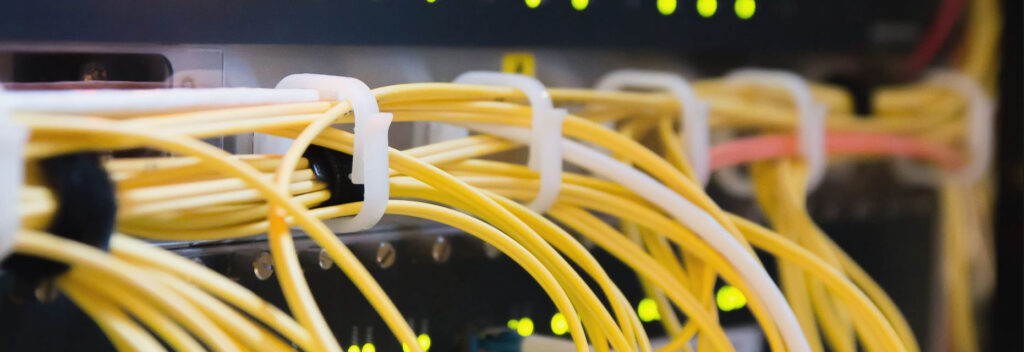Uncategorized
Electricity Glossary
(1)
Electricity is the flow of electrons through a conducting material. The flow of electricity can be used to generate, consume, and transfer power. Due to the nature of electricity, we cannot see it actually flowing. It sometimes helps to imagine electricity as analogous to the flow of water in order to make sense of it. The flow of electricity can be a highly complicated phenomenon so it is very often easier to understand via such analogies. There are three main characteristics of electric flow: voltage, current, and resistance.
Voltage: The amount of work available per unit charge. This is analogous to the pressure in a pipe when comparing to fluid flow. Measured in volts (V).
Current: The amount of charge per unit time. This is analogous to the flow rate of water in a pipe when comparing it to fluid flow. Measured in amperes (A)
Resistance: The resistance against the current. This causes a voltage drop and consumes energy. This is analogous to the friction in pipes when comparing to fluid flow. Measured in ohms (Ω).
The three electrical characteristics of an element are related via Ohm’s Law:
V = Current * Resistance
Current is also used to calculate power using the following equation:
P = I * V
where P = power, I = current, and V = voltage.
AC versus DC
There are two main types of current used in most electronic circuits today. They are alternating current (AC) and direct current (DC).
Direct Current (DC) – Direct current is the constant flow of electric charge in one direction. Batteries generate direct current to power handheld items. Most electronics use direct current for internal power often converting alternating current (AC) to direct current (DC) using a transformer.
Alternating Current (AC) – Alternating current is current where the flow of electric charge is constantly changing directions. Alternating current is mostly used today to transmit power on power lines. In the United States the frequency at which the current alternates is 60 Hertz. Some other countries use 50 Hertz as the standard frequency.
(2)
Electrical Conductors
Electrical conductors allow electric current to flow easily because of the make up of their atoms. In a conductor, the outer electrons of the atom are loosely bound and can freely move through the material when an electric charge is applied.
Conductive Materials
In general, the best electrical conductors are metals. Metals tend to have electrons in the outer layer of their atoms that are freely shared. The most conductive of all the elements is silver. Unfortunately, silver is too rare and expensive to use in most electrical equipment. Today, the most commonly used electrical conductor is copper. Copper is used in electrical wiring and electrical circuits throughout the world.
Conductance and Resistance
Another way to think of conductance is as the opposite of resistance. The resistance of a material is a measurement of how well a material opposes the flow of electric current. Sometimes conductance is represented by the letter “G” where G is the inverse of resistance, R.
G = 1/R
Using Ohm’s law we know that resistance is equal to voltage divided by current or R = V/I, therefore
G = I/V
Superconductors
A superconductor is a material that is a perfect conductor. It has an electrical resistance of zero. All of the superconductors that have been discovered by scientists to date require a very cold temperature on the order of minus 234 degrees C in order to become superconductors.
Electrical Insulators
The opposite of a conductor is an insulator. An insulator opposes the flow of electricity. Insulators are important to keep us safe from electricity. The wire that carries electricity to your computer or television is covered with a rubber-like insulator that protects you from getting electrocuted. Good insulators include glass, the air, and paper.
Semiconductors
Some materials behave in between a conductor and an insulator. These materials are called semiconductors. Semiconductors are important in electronics such as computers and mobile phones because their conductivity can be controlled allowing for current to flow in just one direction or only under certain circumstances. The most commonly used semiconductor in electronics today is silicon.
Interesting Facts about Electrical Conductors and Insulators
Most good electrical conductors are also good conductors of heat.
Temperature can play an important role in the conductance of a material. In general, the higher the temperature the lower the conductivity as resistance increases with temperature.
Aluminum has a lower conductivity than copper, but is sometimes used in wiring for lower cost.

